The Stone Earthship That Lets a Family Travel — No Mortgage
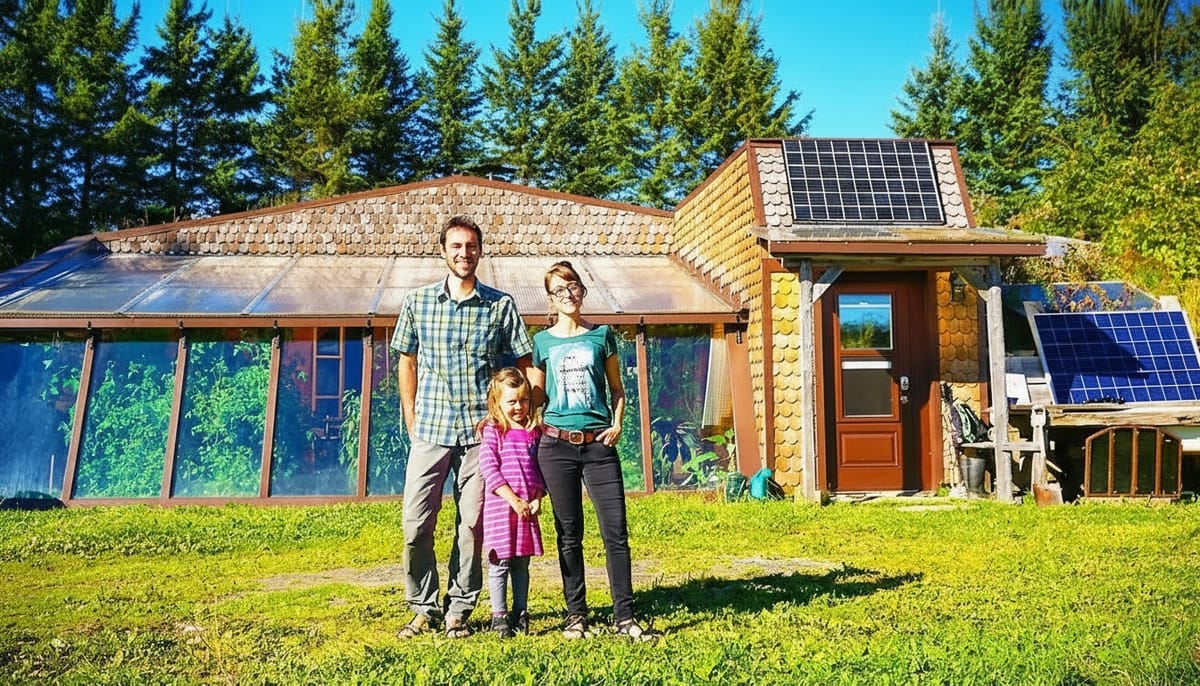
A renovated stone earthship sits tucked into the land.
First Look — The Stone Earthship & Greenhouse
Its walls were built with local rock and forest beams over decades.
The family bought the house as an earthship and renovated it to live off-grid.
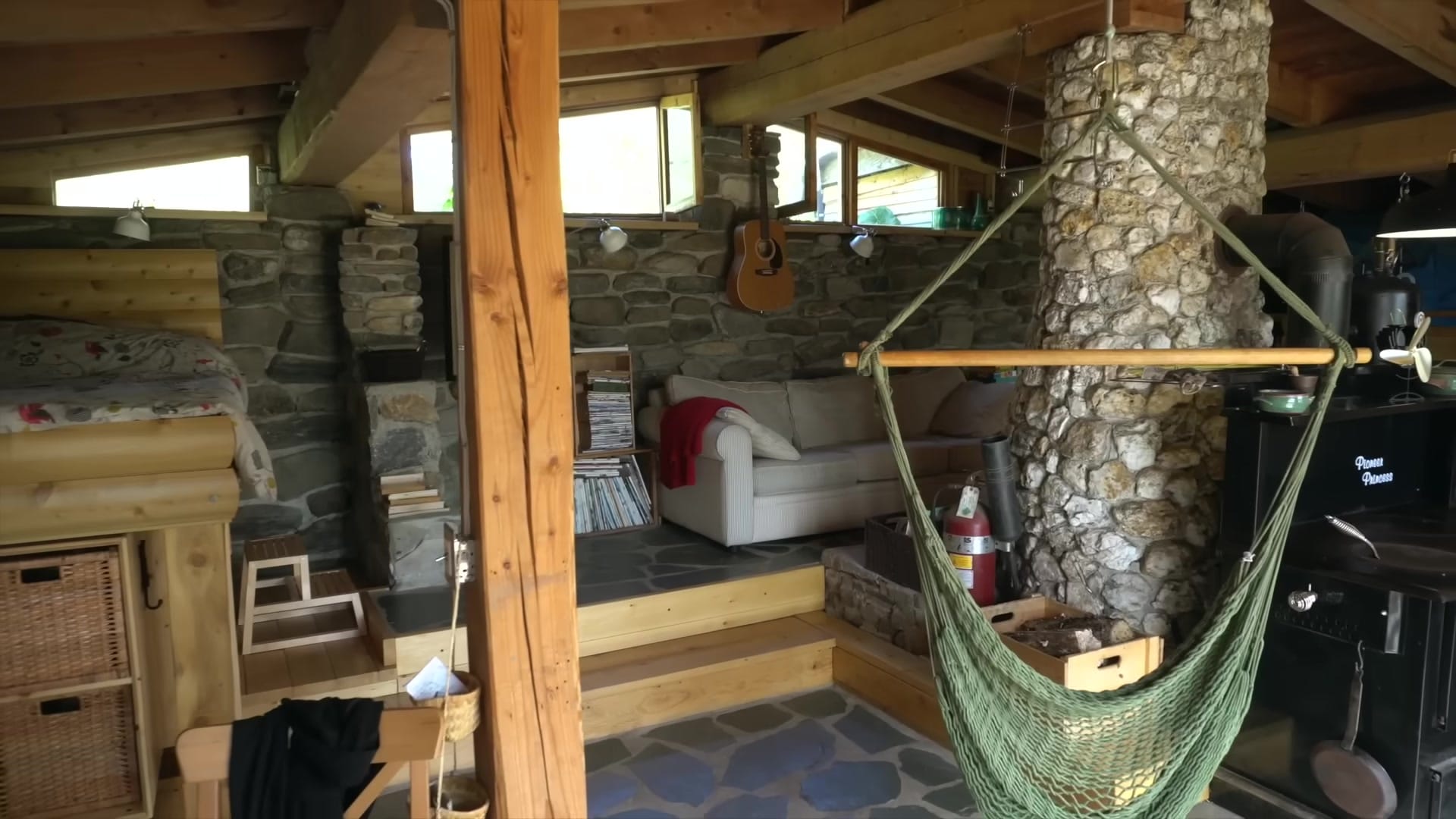
The place works like a compact ecosystem with a built-in greenhouse.
Power comes from small solar arrays and rainwater is the primary supply.
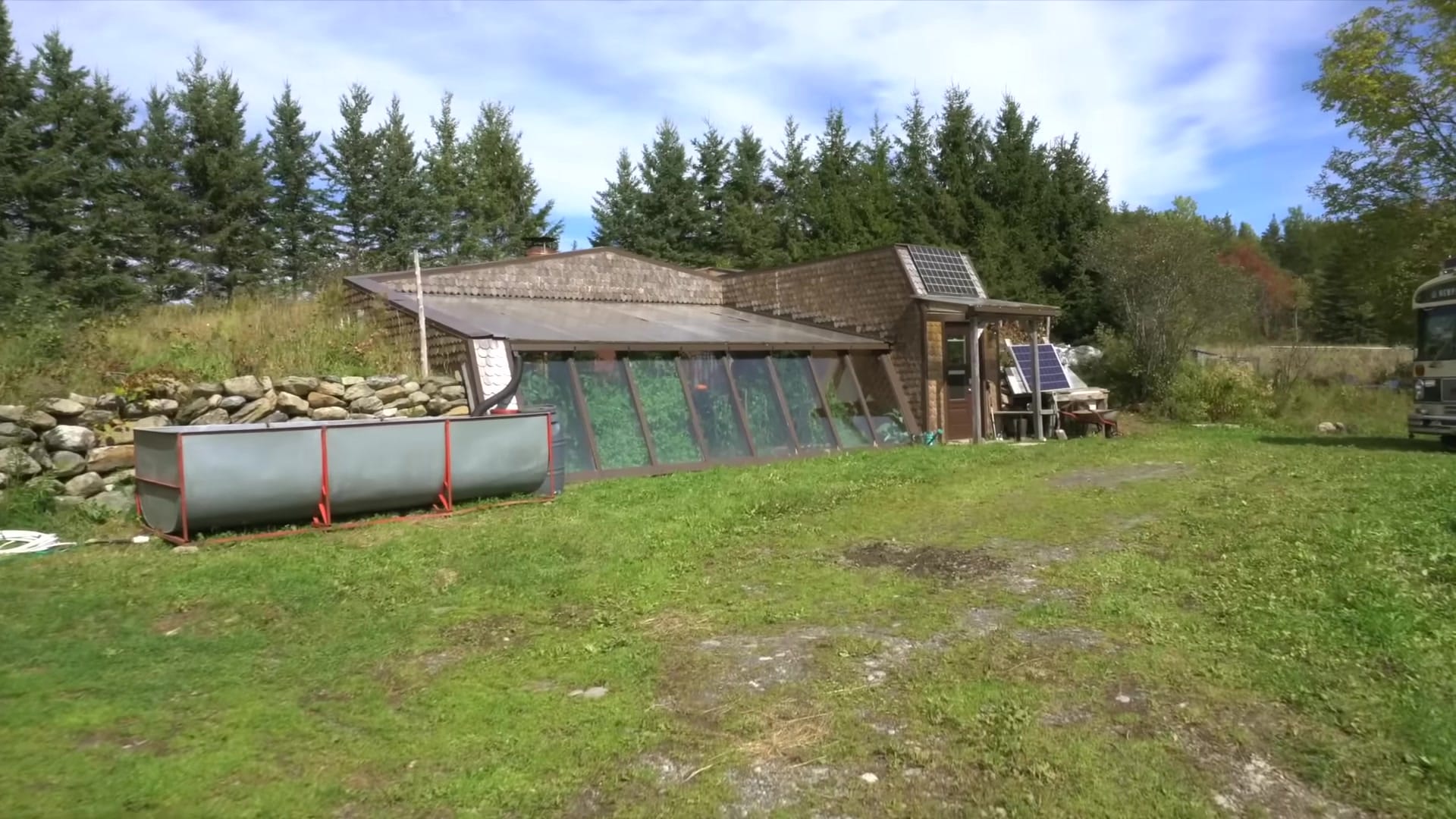
A greenhouse doubles as living space where meals happen at a communal table.
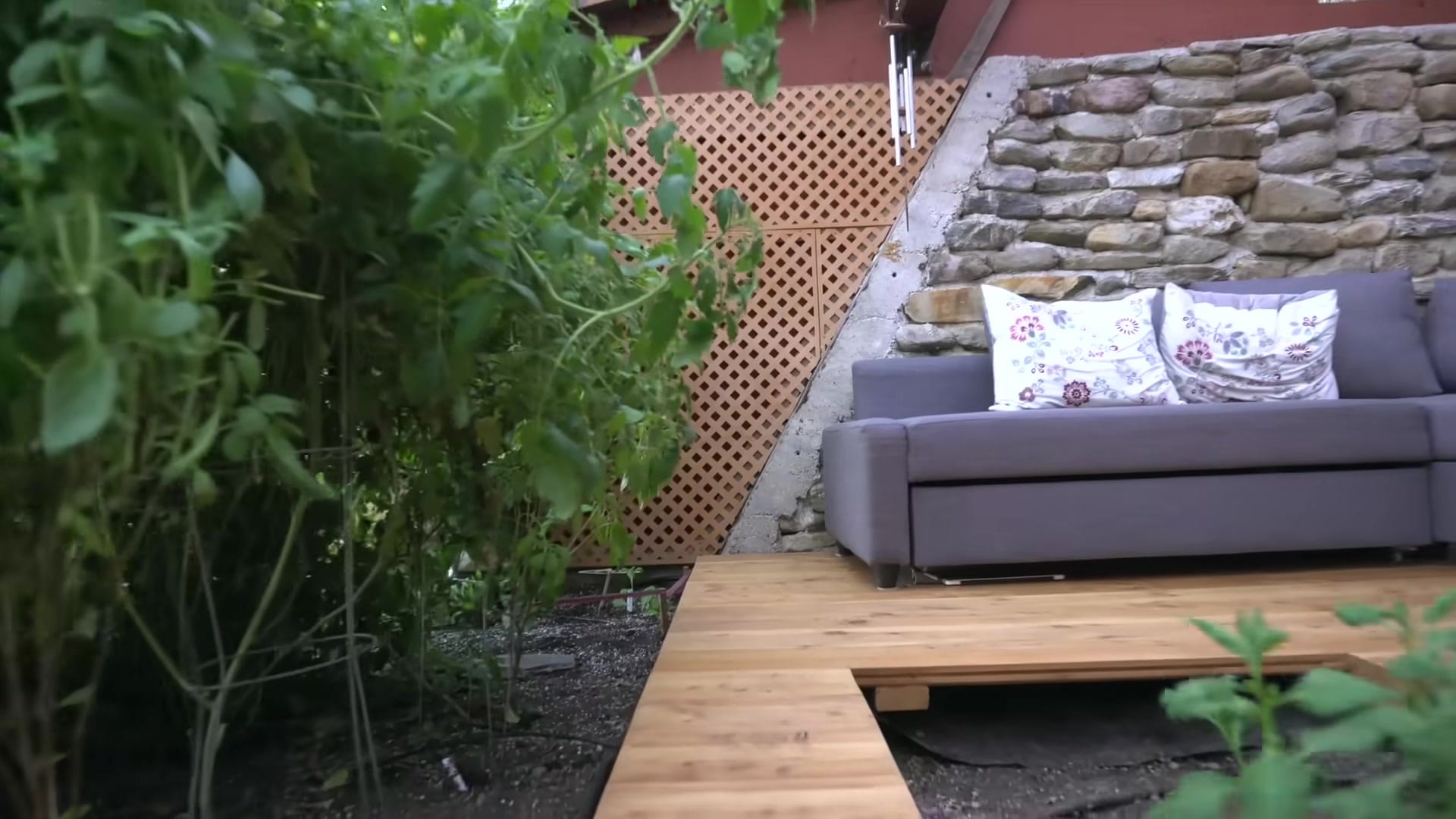
That greenhouse adds real square metres — the whole house totals about 100 m² with a 35 m² greenhouse.
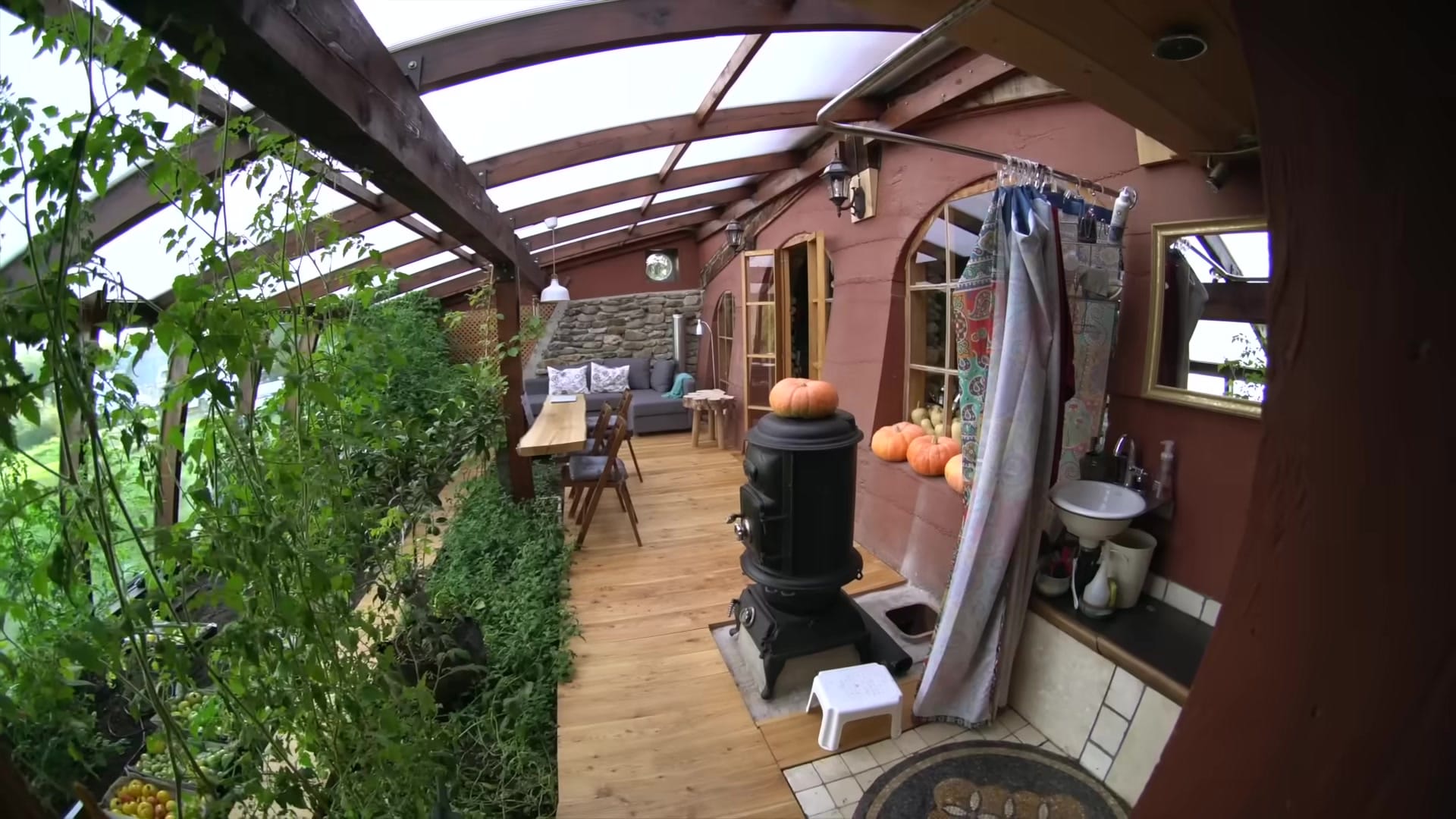
An extra bed and a bathroom sit inside the greenhouse, so the indoor/outdoor line blurs.
The layout feels intentional: passive solar angles, thick stone thermal mass, and green light in the front.
Growing Food — Garden, Chickens, Preserves & Root Cellar
The property includes a big productive garden, roughly 250 m².
Rows of vegetables, fruit trees, and berry patches feed most meals in summer.
Summer grocery bills can drop to around $30 per week because so much is produced on-site.
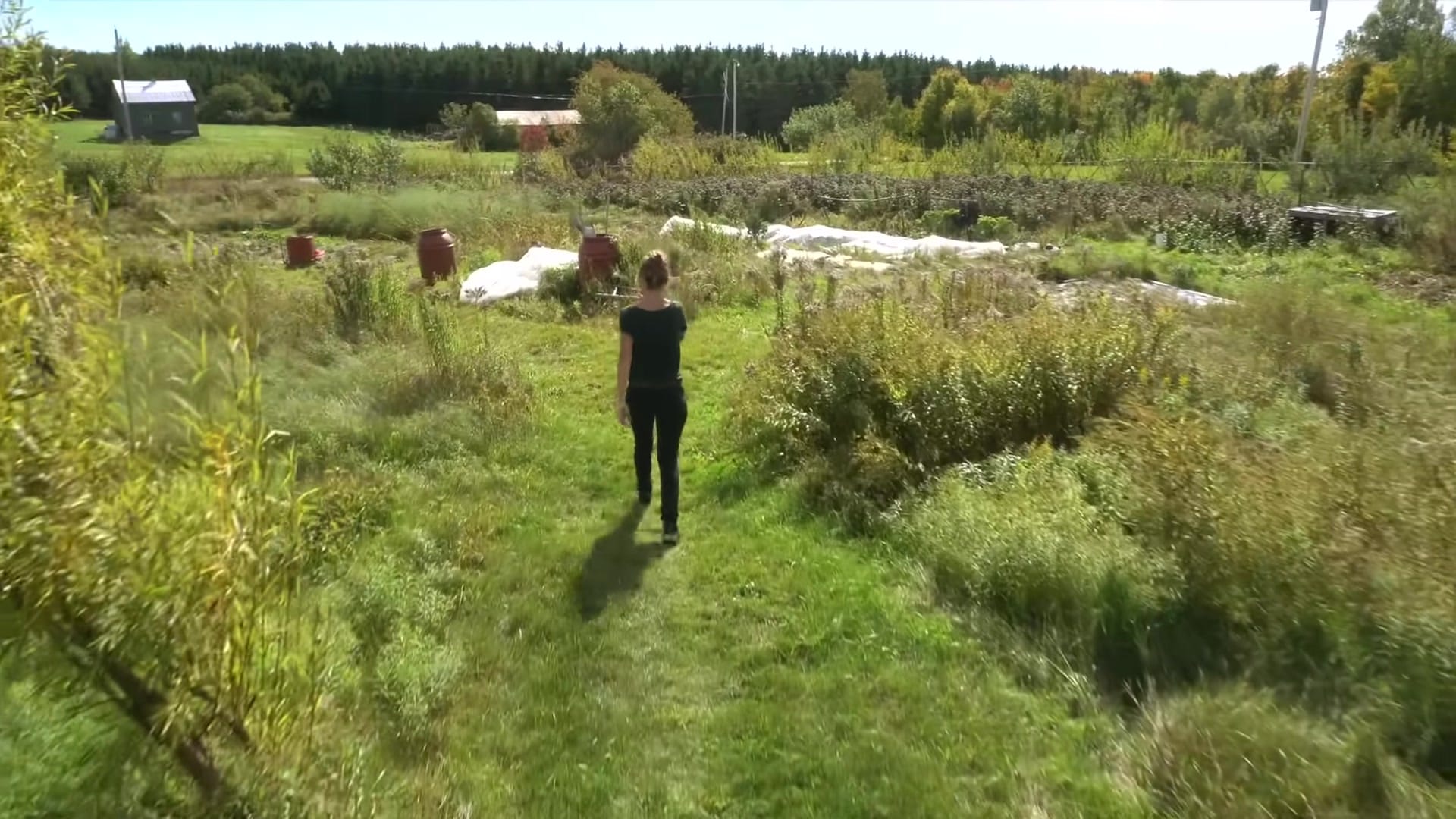
Harvests are preserved for winter by freezing and jam-making.
Jars and frozen fruit stretch the garden’s yield into colder months.
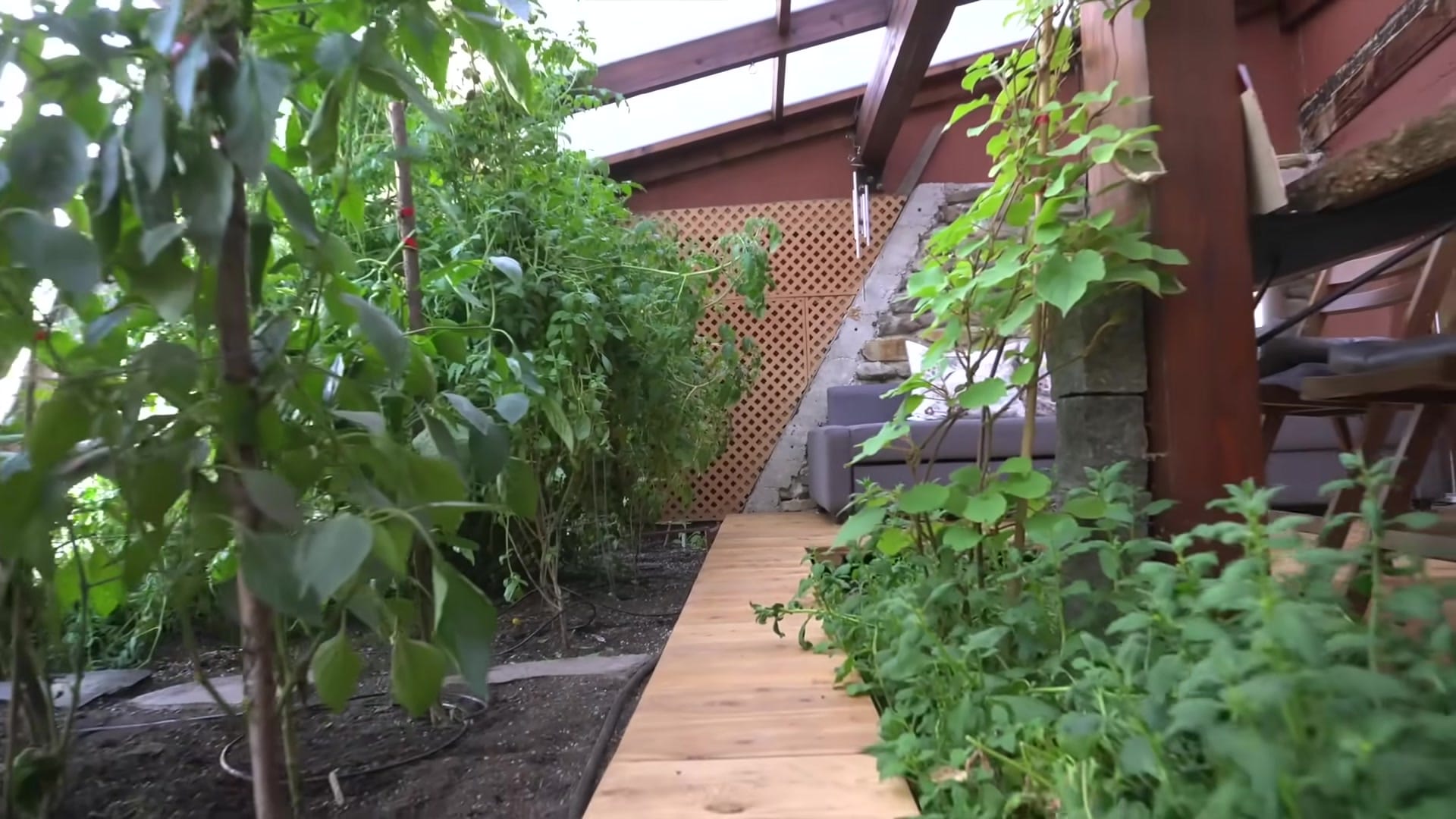
Eggs, fresh bread, and backyard produce form the core pantry.
They save a lot by processing fruit into preserves and by drying or freezing excess.
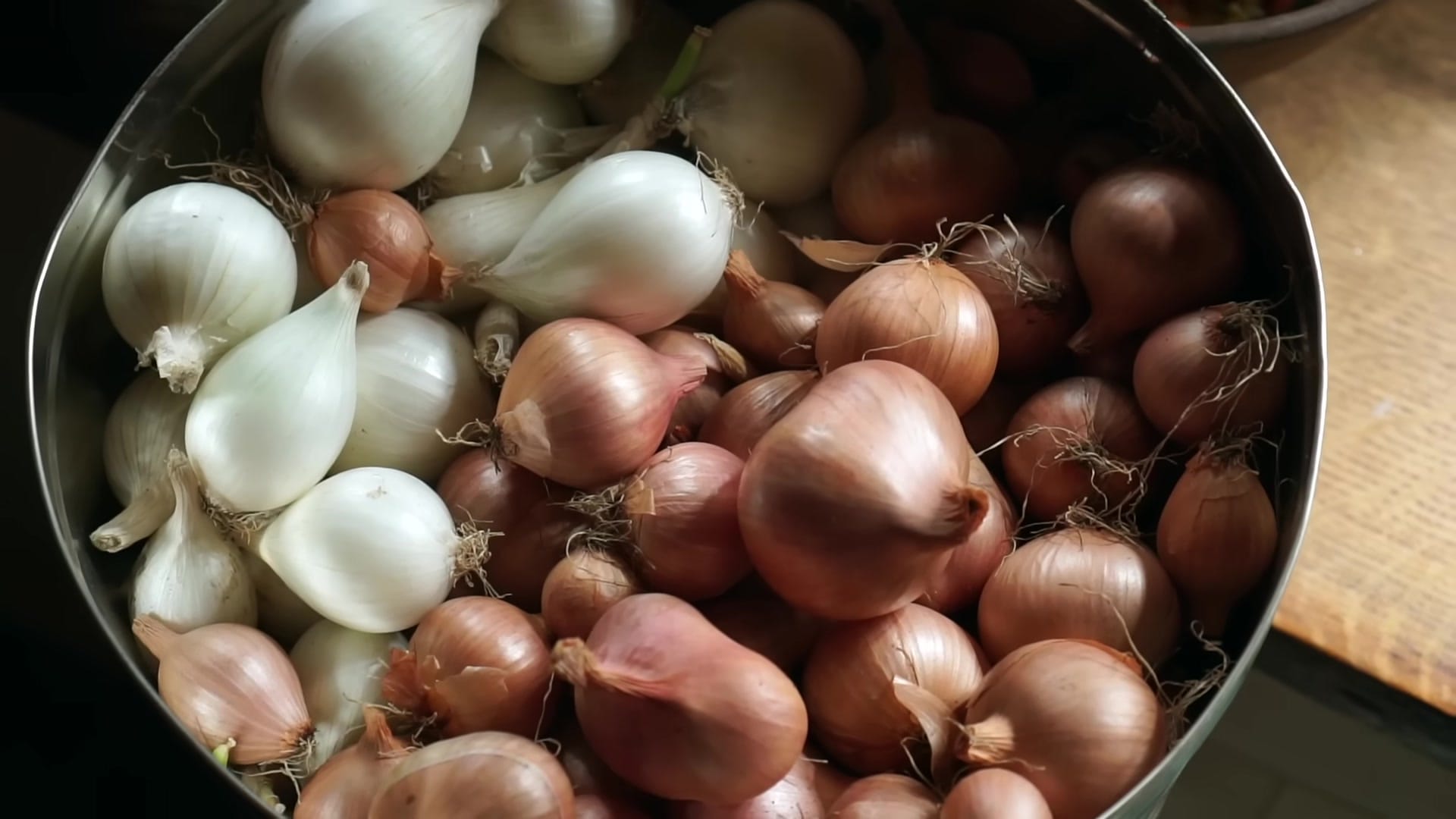
A cool root cellar stores much of the harvest and helps avoid relying on a fridge.
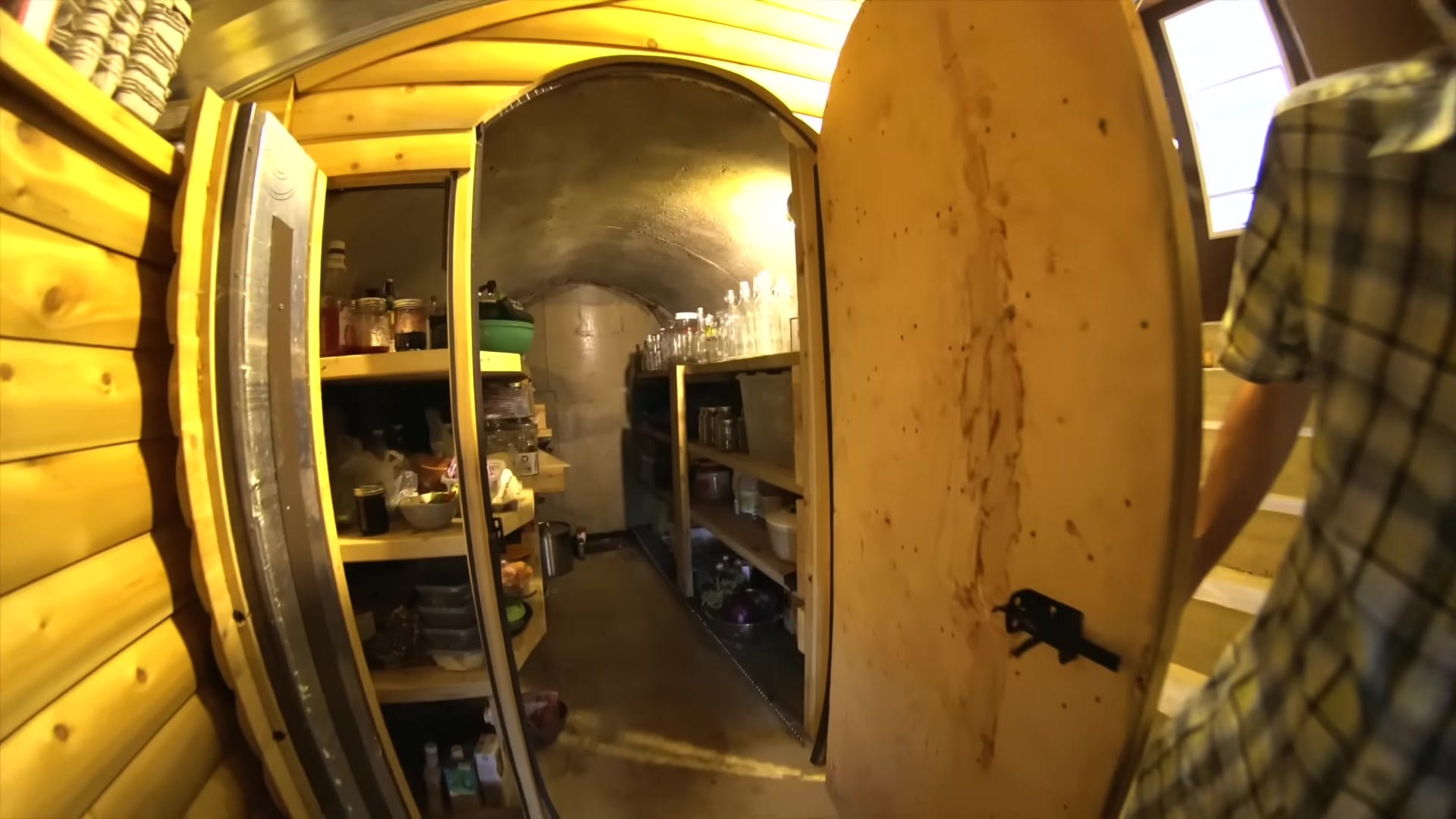
The combination of garden, chickens, and cellar creates true seasonal food security.
Water Systems — Rain Collection, Tanks and the Cistern
All household water comes from rain-capture systems.
A large tank collects runoff from the greenhouse roof before any transfer.
That greenhouse tank feeds water into an underground concrete cistern via a gravity-fed route.
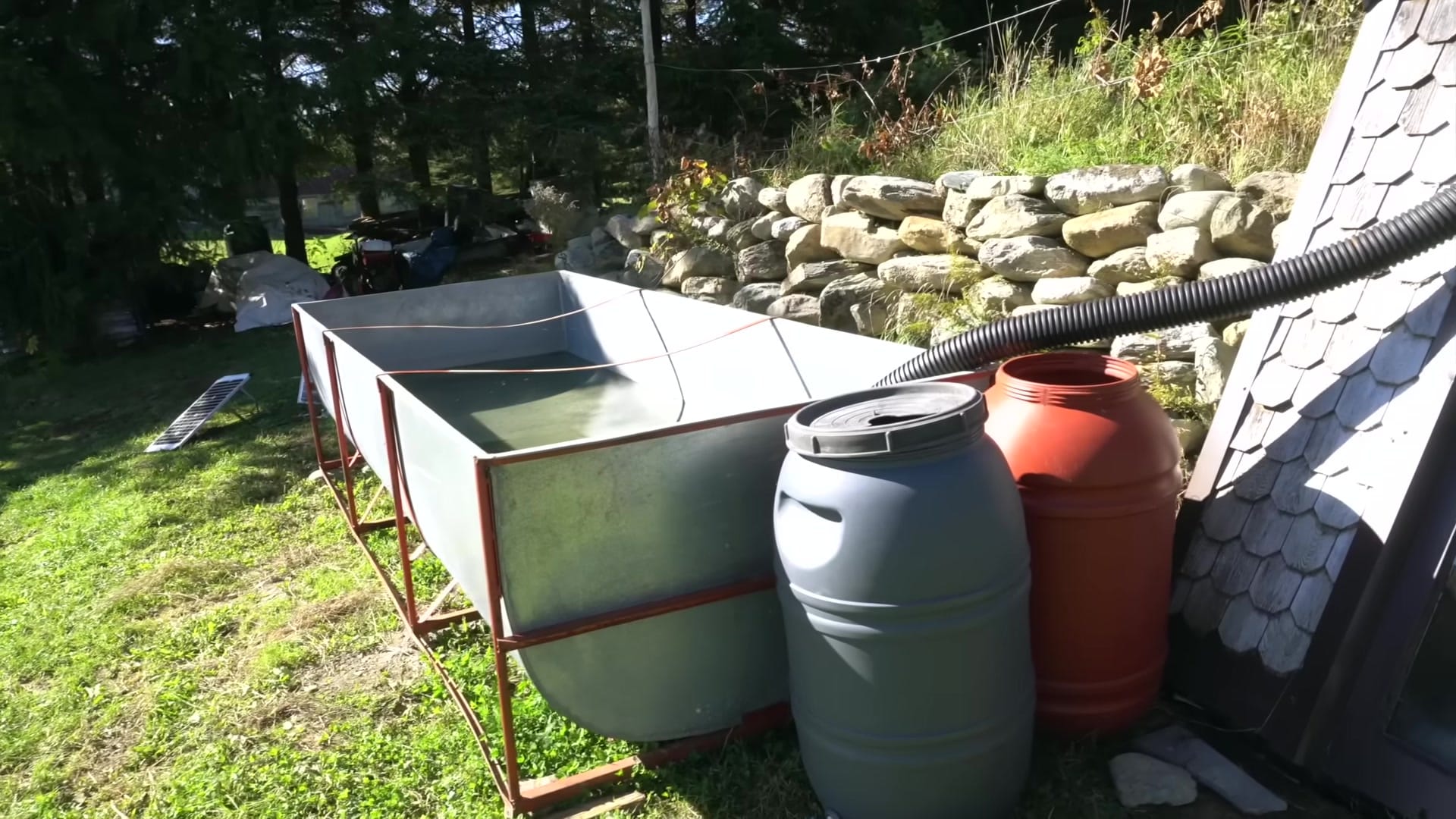
The above-ground tank water is pumped and then stored in the buried cylinder for steady supply.
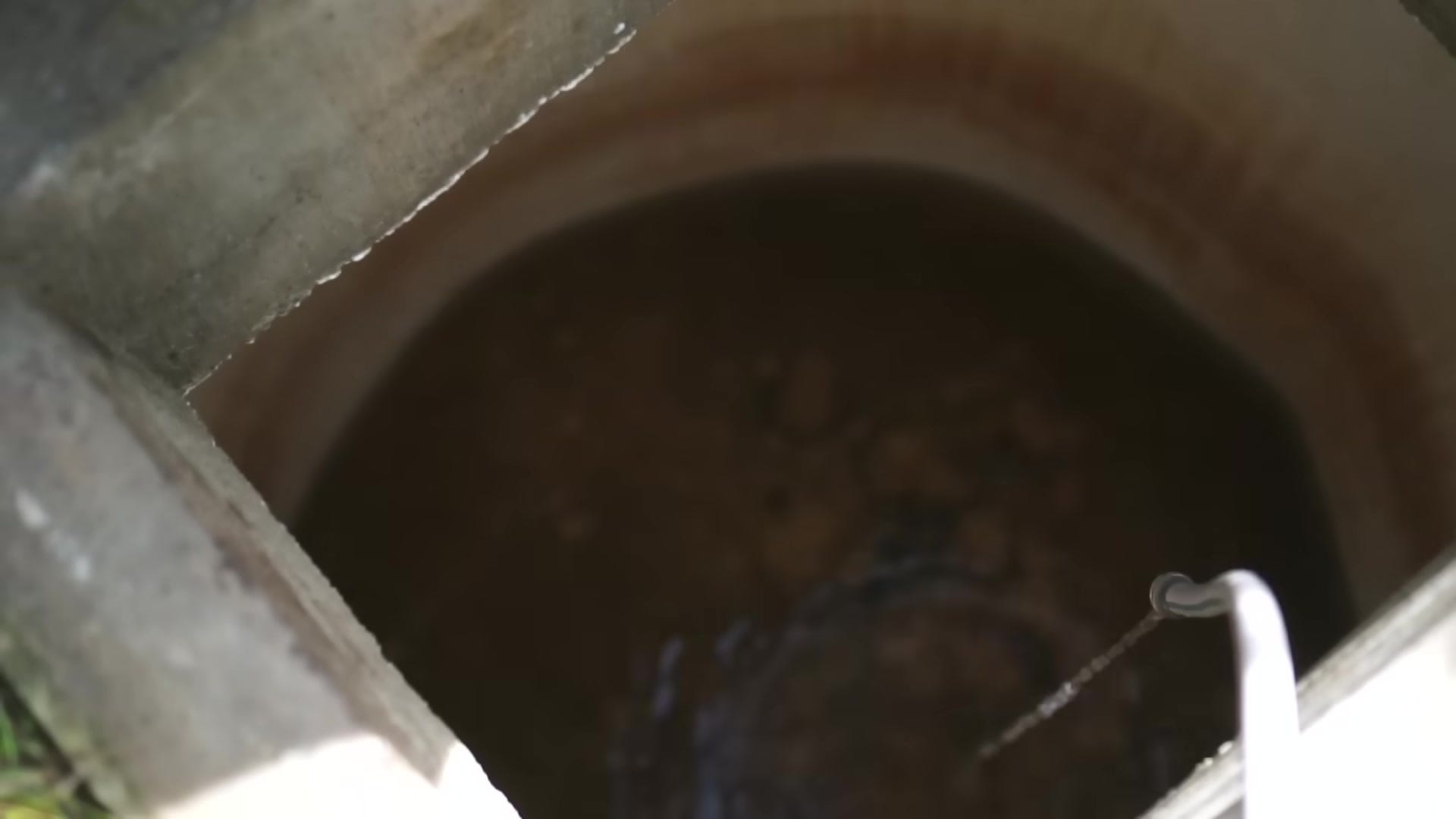
A separate 1,000-litre tank in the greenhouse captures additional roof rain for immediate use.
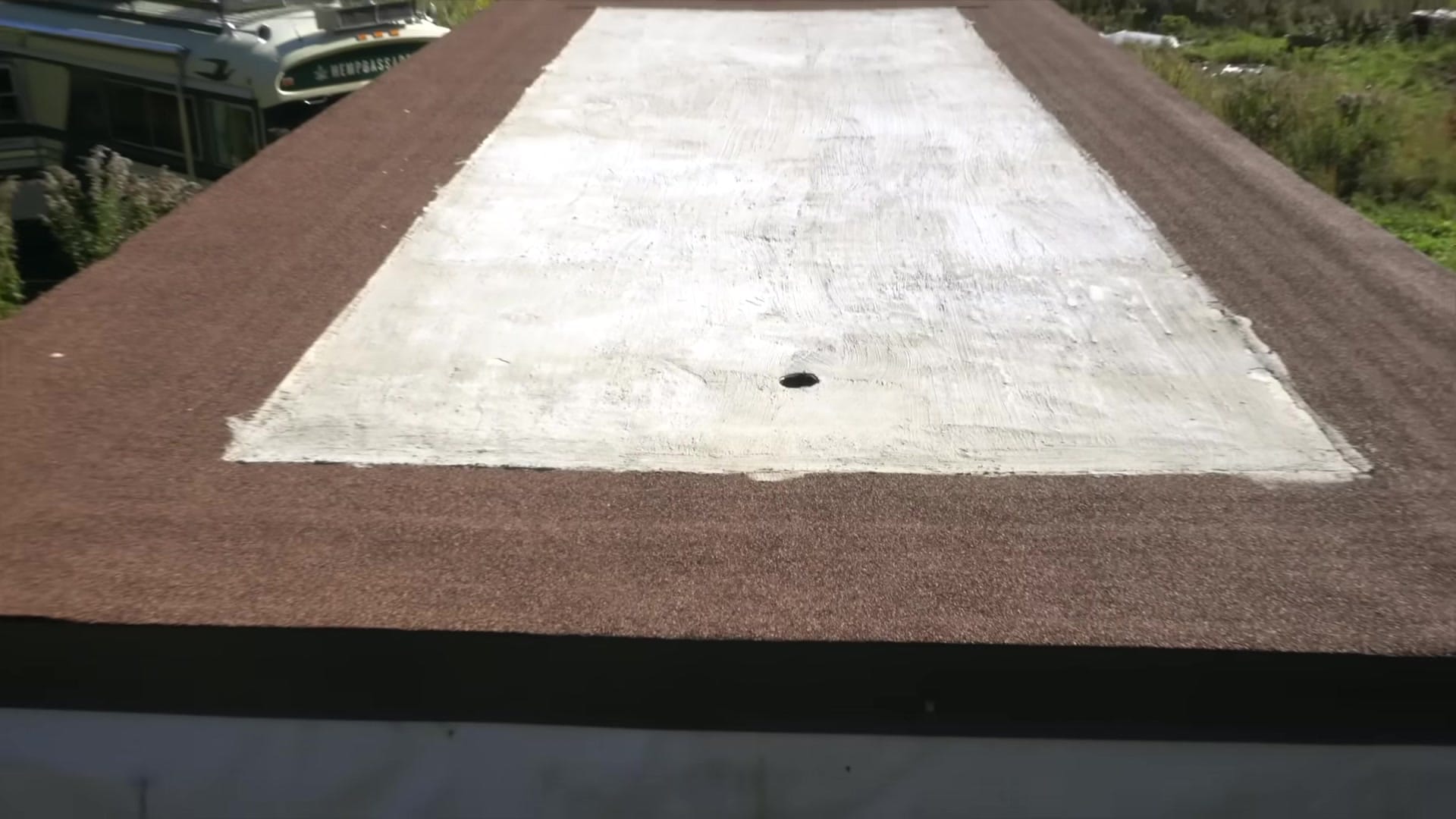
A third collection system gathers water from the shed primarily for gardens and chickens.
When every reservoir is full the system holds roughly 10,000 litres of fresh rainwater.
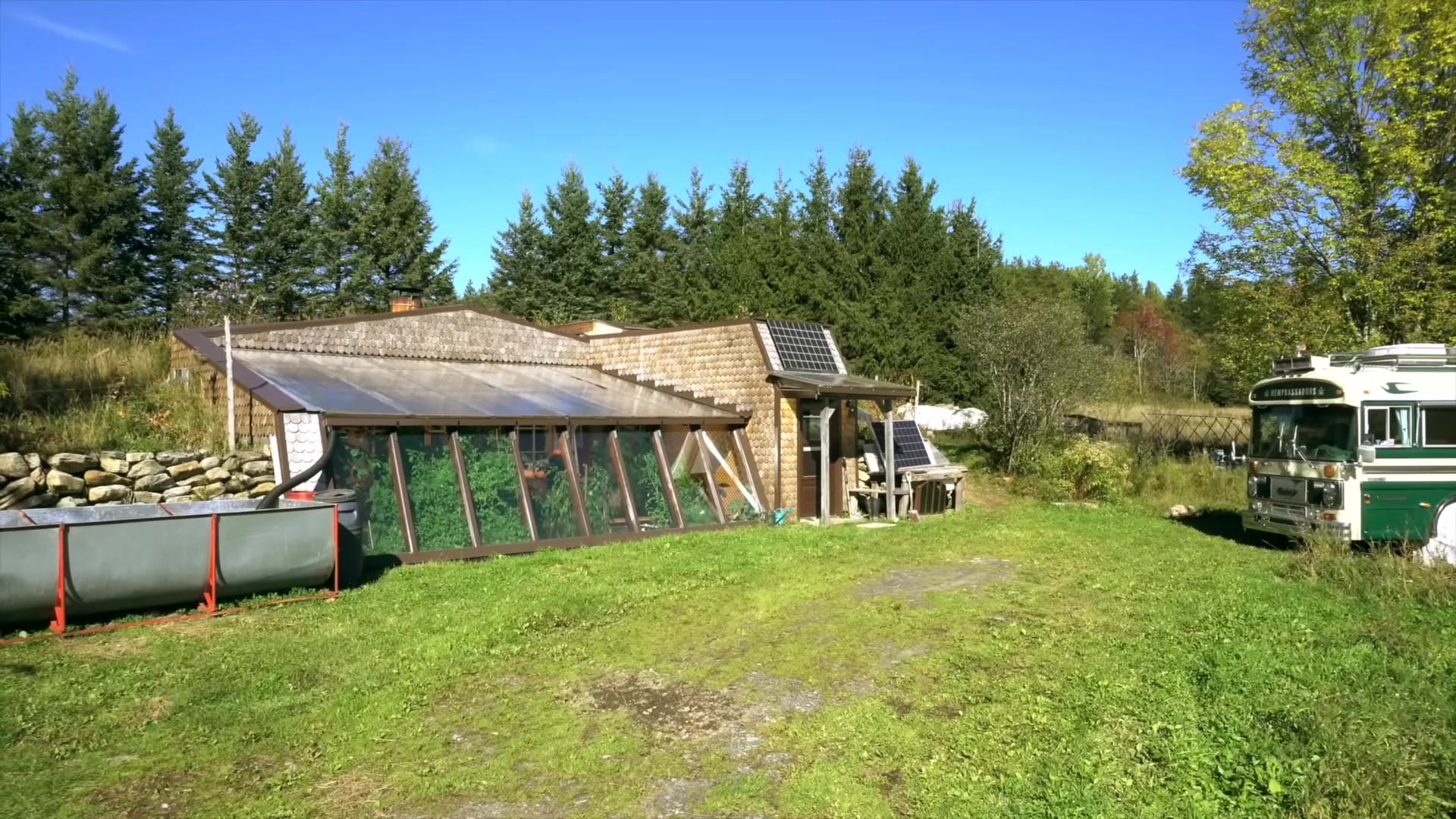
Drinking water still comes from a nearby cabin’s well for now, though filtration is possible.
The layered tanks and cistern make shortages rare even in dry stretches.
Power & Heat — Solar Setup and the Amish Wood Stove
Electric needs are covered by modest solar setups and batteries.
Two small solar systems and a pair of battery packs keep lights, pump, and internet running.
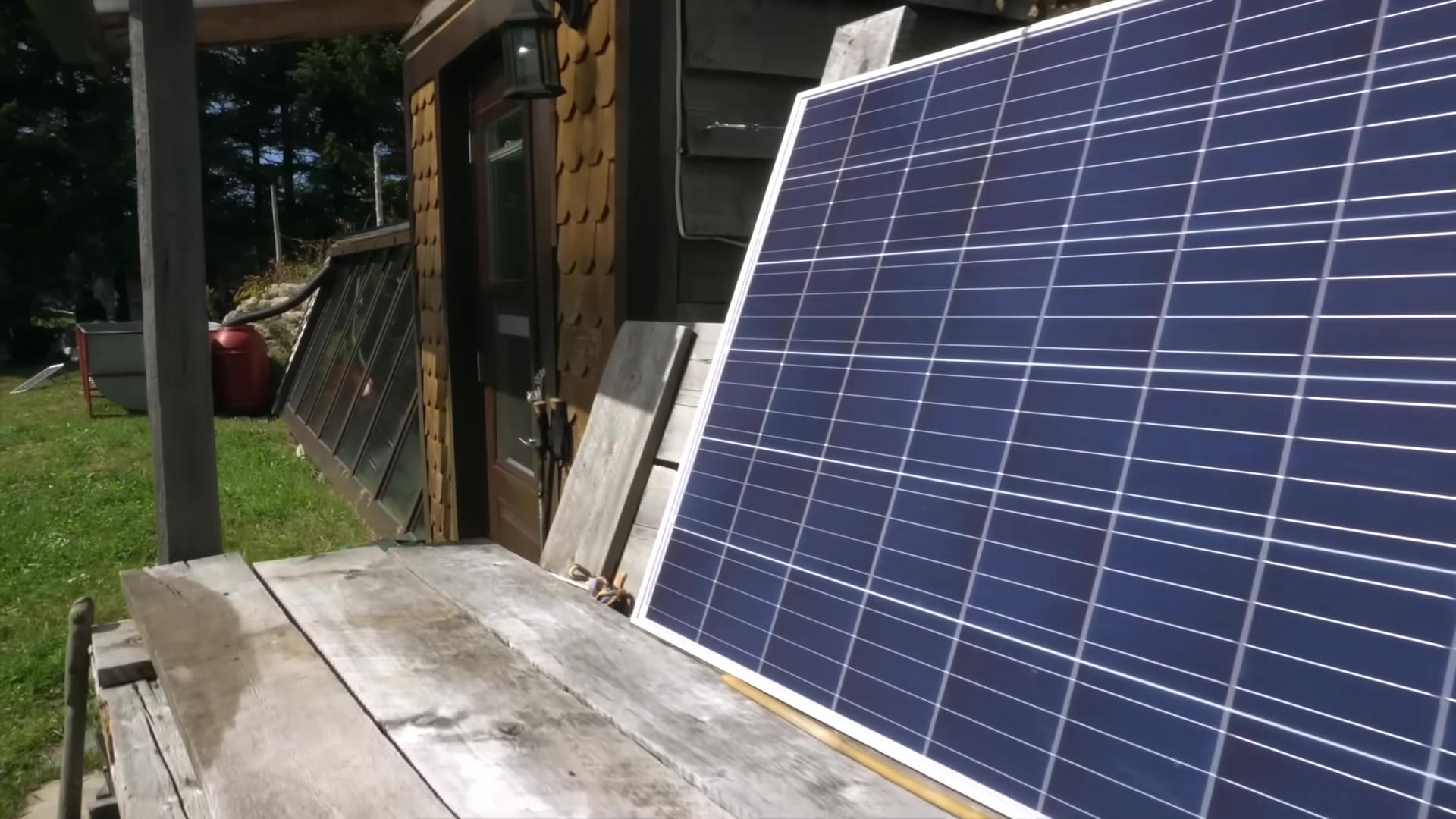
Most heavy consumption is the internet; many loads are kept to 12‑volt when possible to save power.
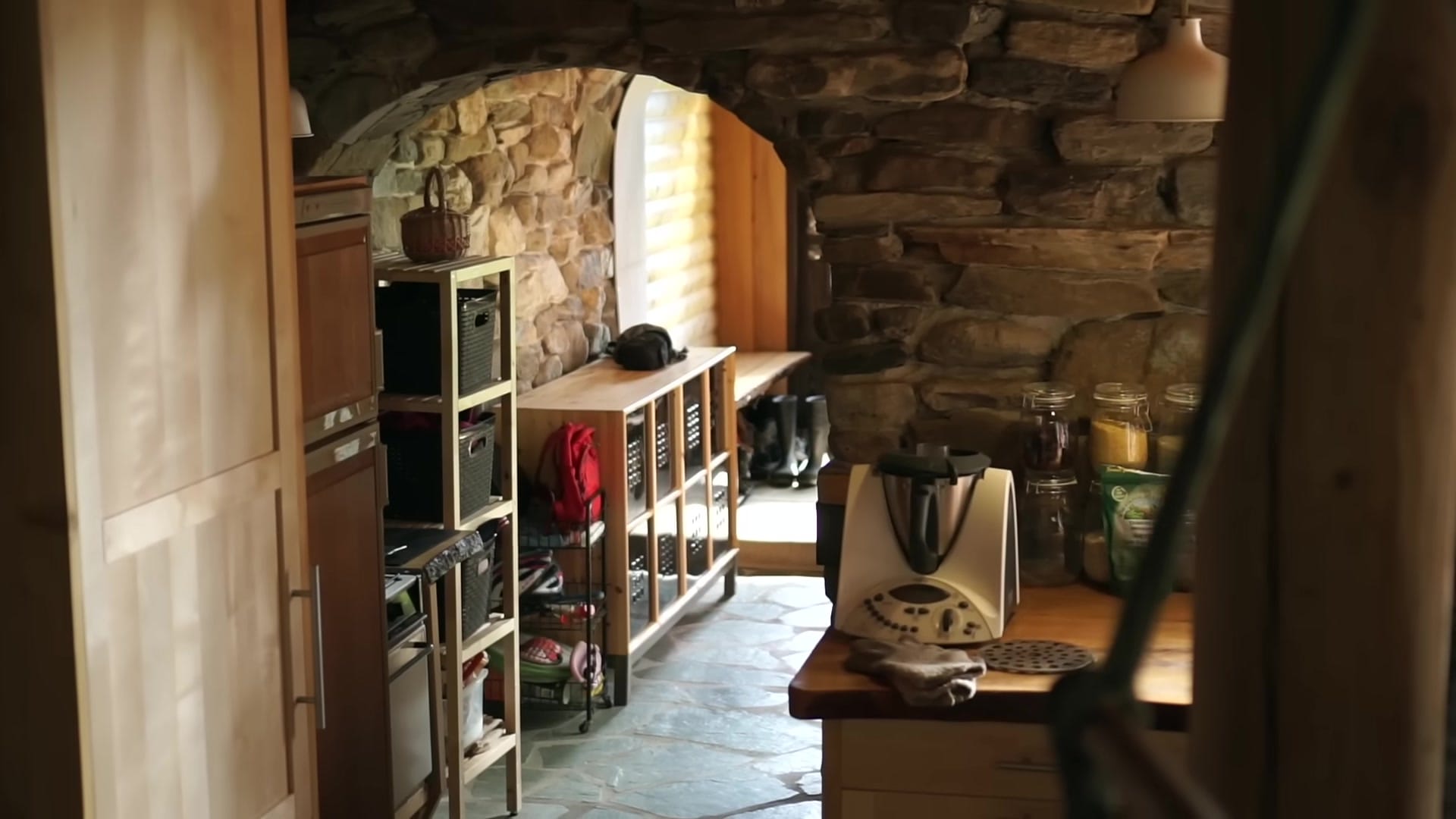
The house is primarily passive solar for daytime warmth and thermal stability.
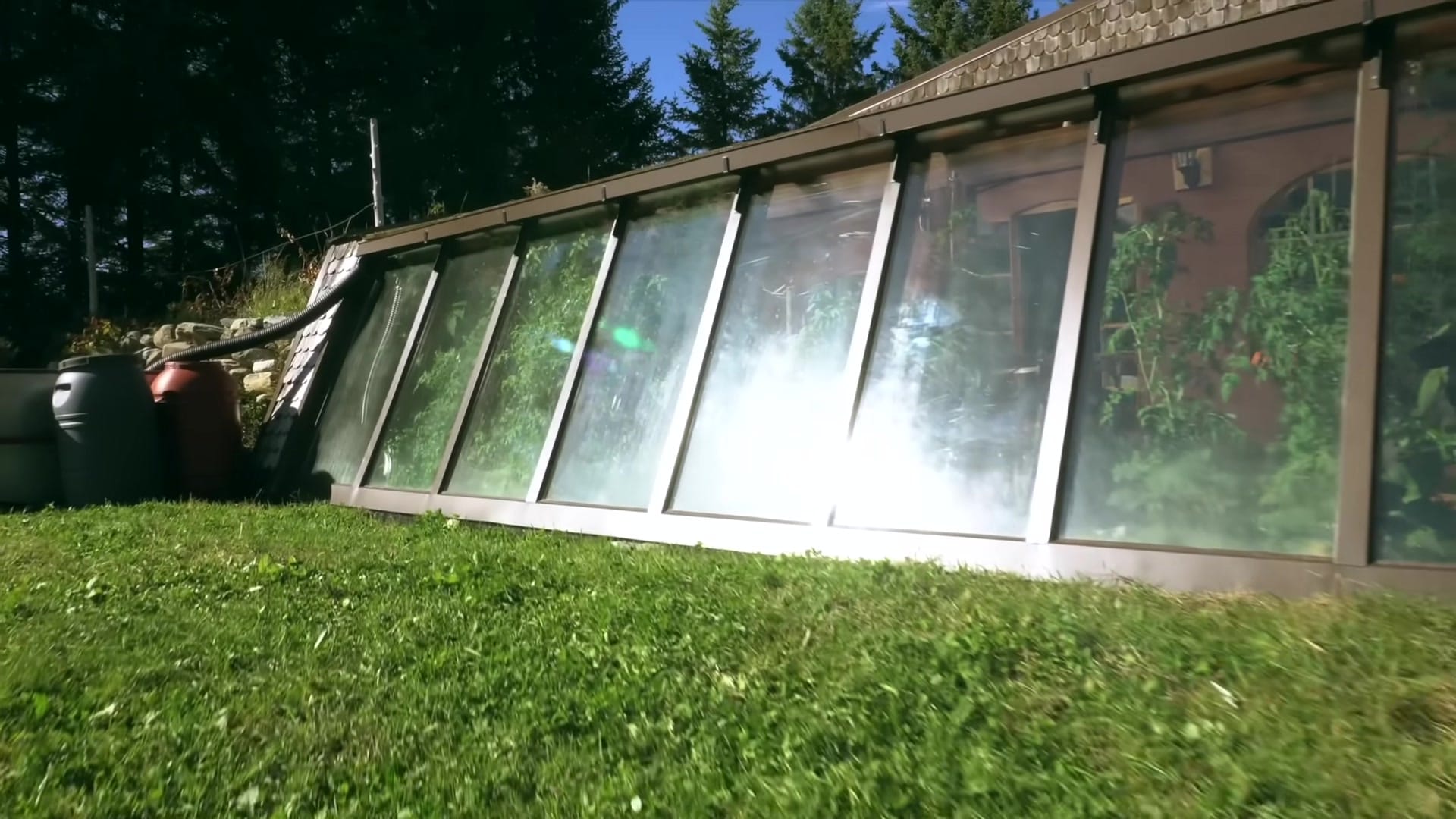
Because of Canadian winters, a central Amish cookstove provides reliable heat, hot water, and a cooking surface.
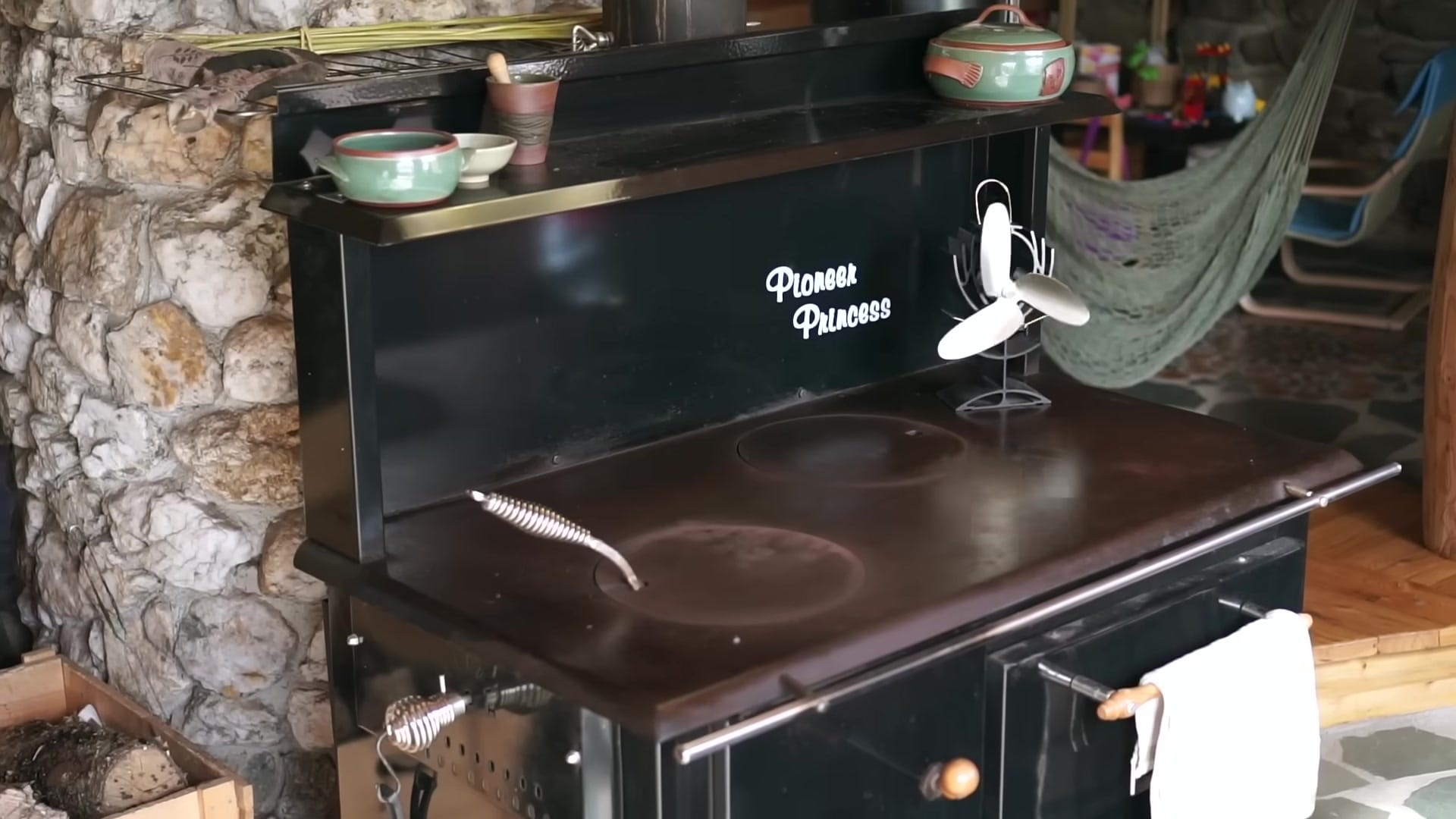
The stove doubles as a workhorse: cooking, heating water, and warming the living spaces.
Passive solar plus thermal mass keeps interior temps reasonable even without constant fire.
Plans exist to expand the solar array and battery capacity as needs grow.
For now the small system is simple and functional.
Waste & Water Care — Composting Toilets and the Greywater Pond
Sanitation is low-tech and sustainable.
Two dry composting toilets cover daily needs, one inside for nights and one outside as the main unit.
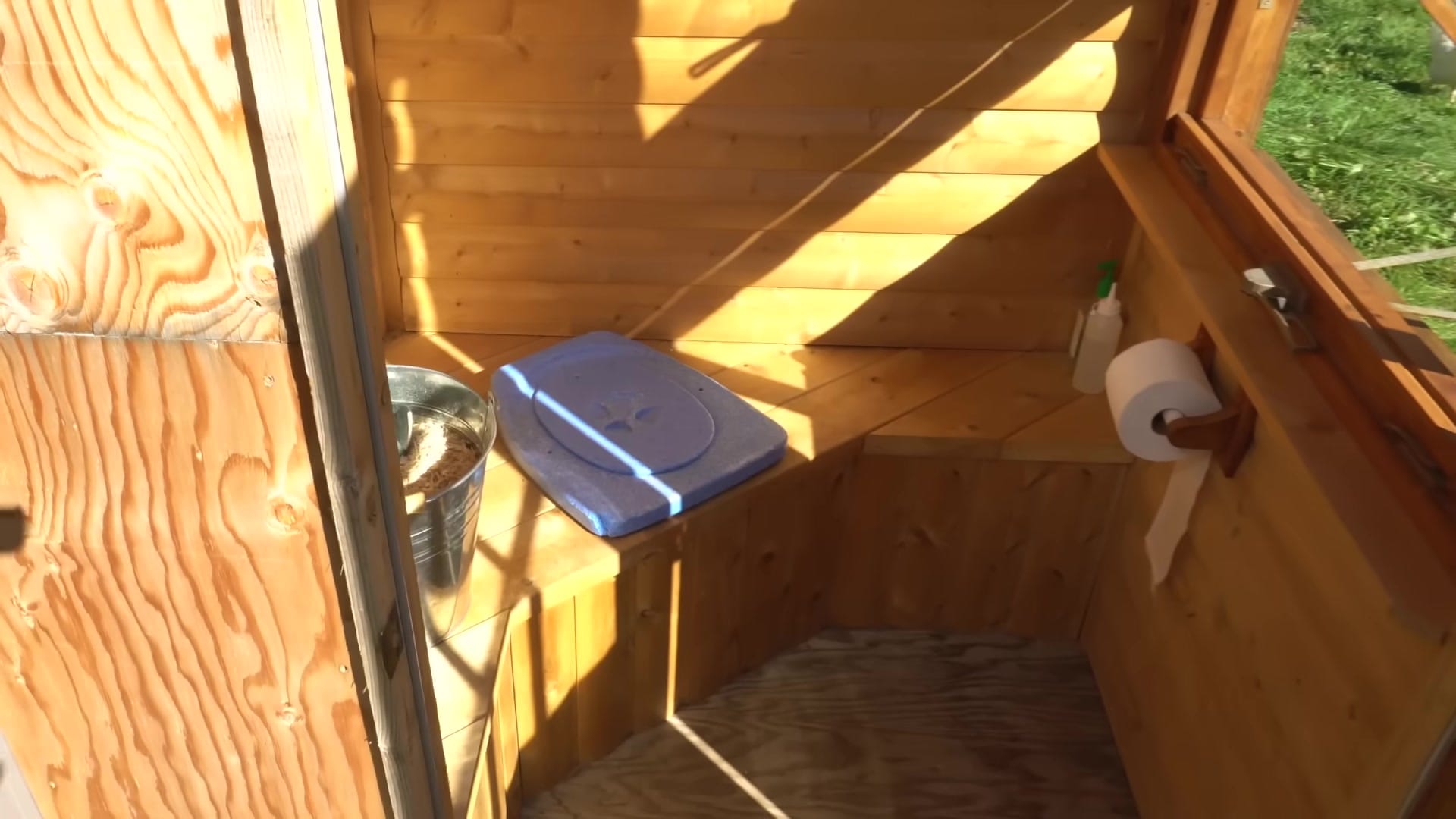
The inside unit is handy for winter and for the child; the outside unit handles most traffic.
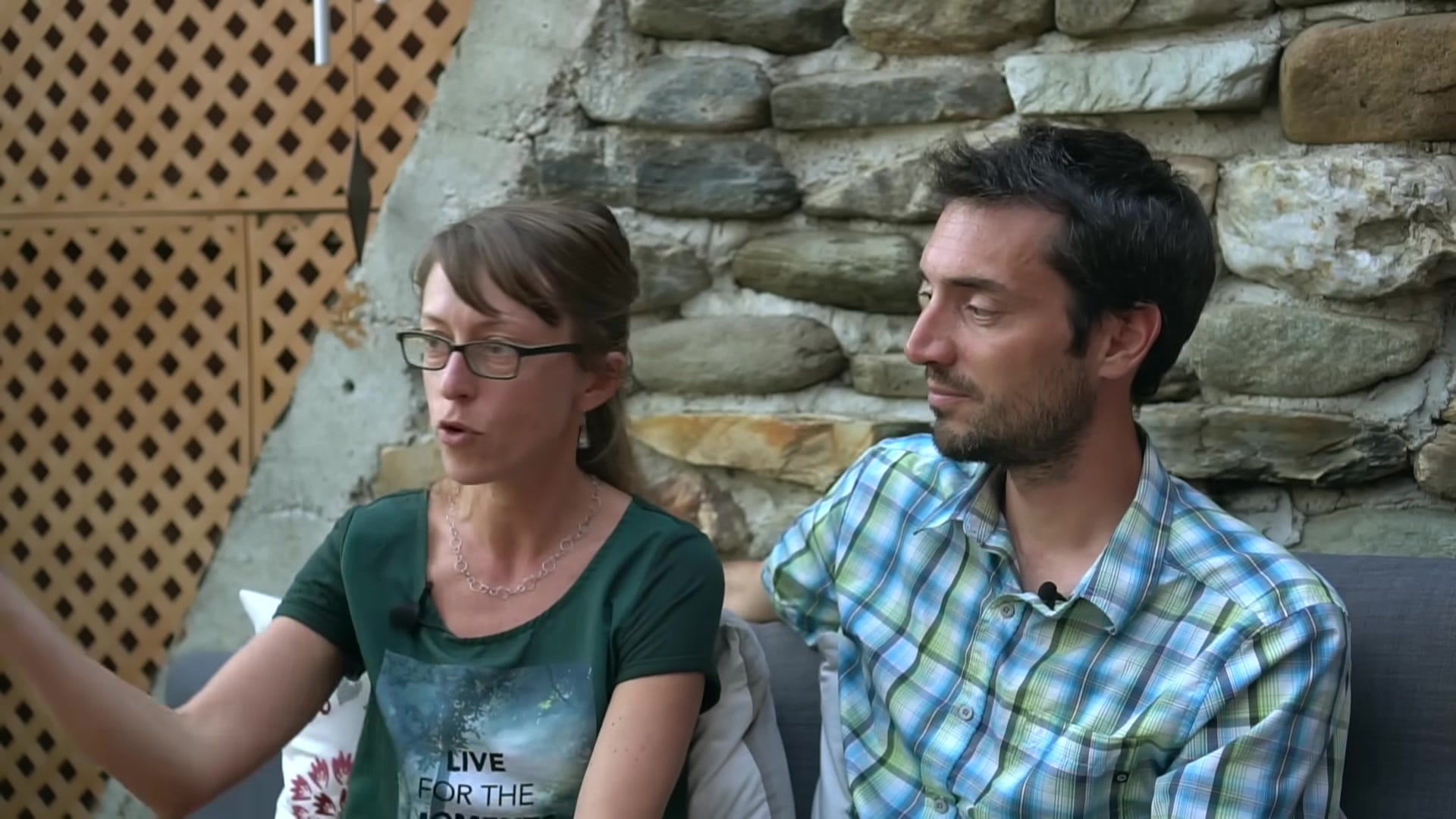
Shower and sink water flow to a planted greywater pond rather than into sewers.
Aquatic and marsh plants filter and clean the greywater in that pond.
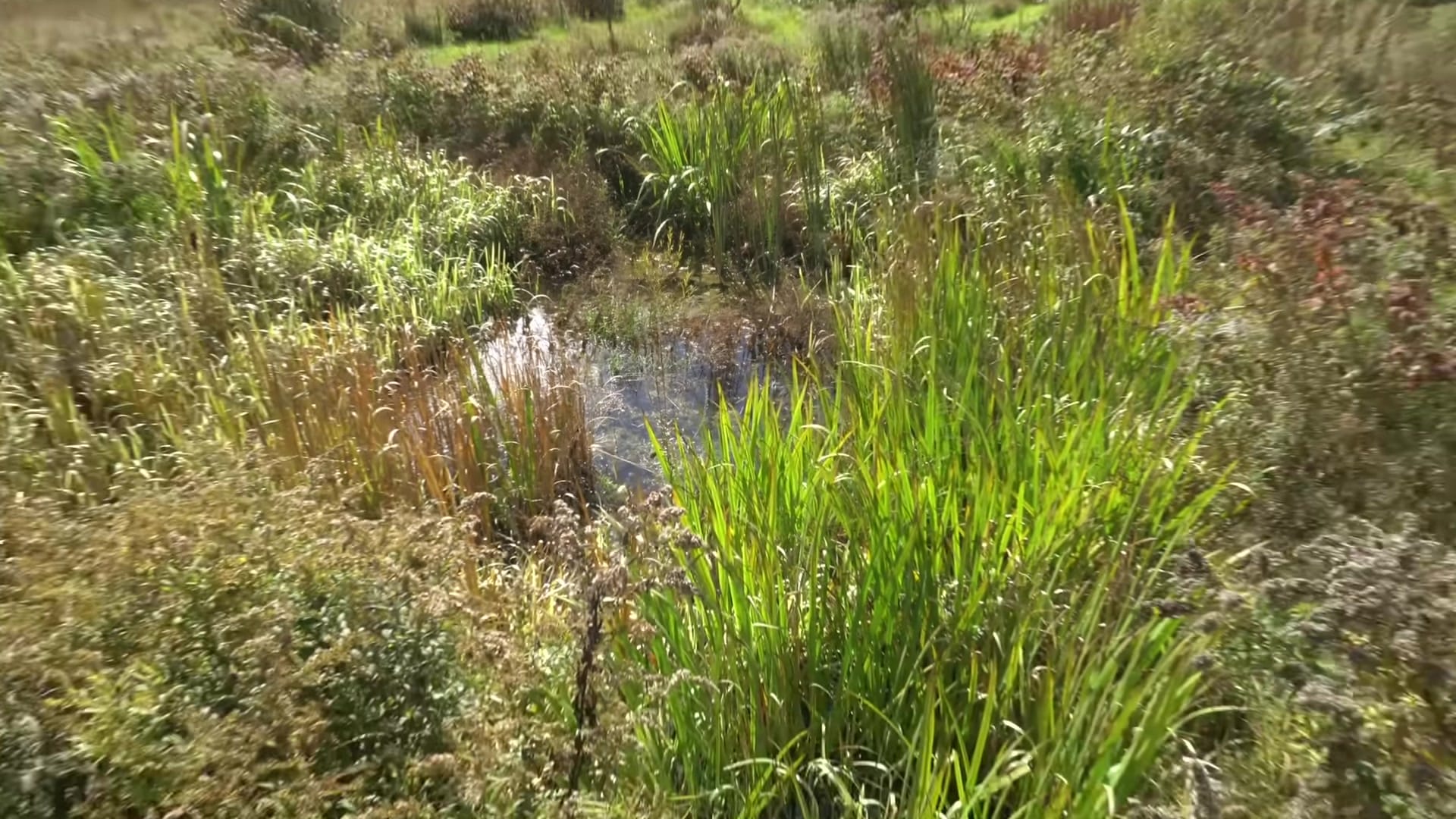
Only greywater from showers and sinks goes to the pond to keep treatment simple.
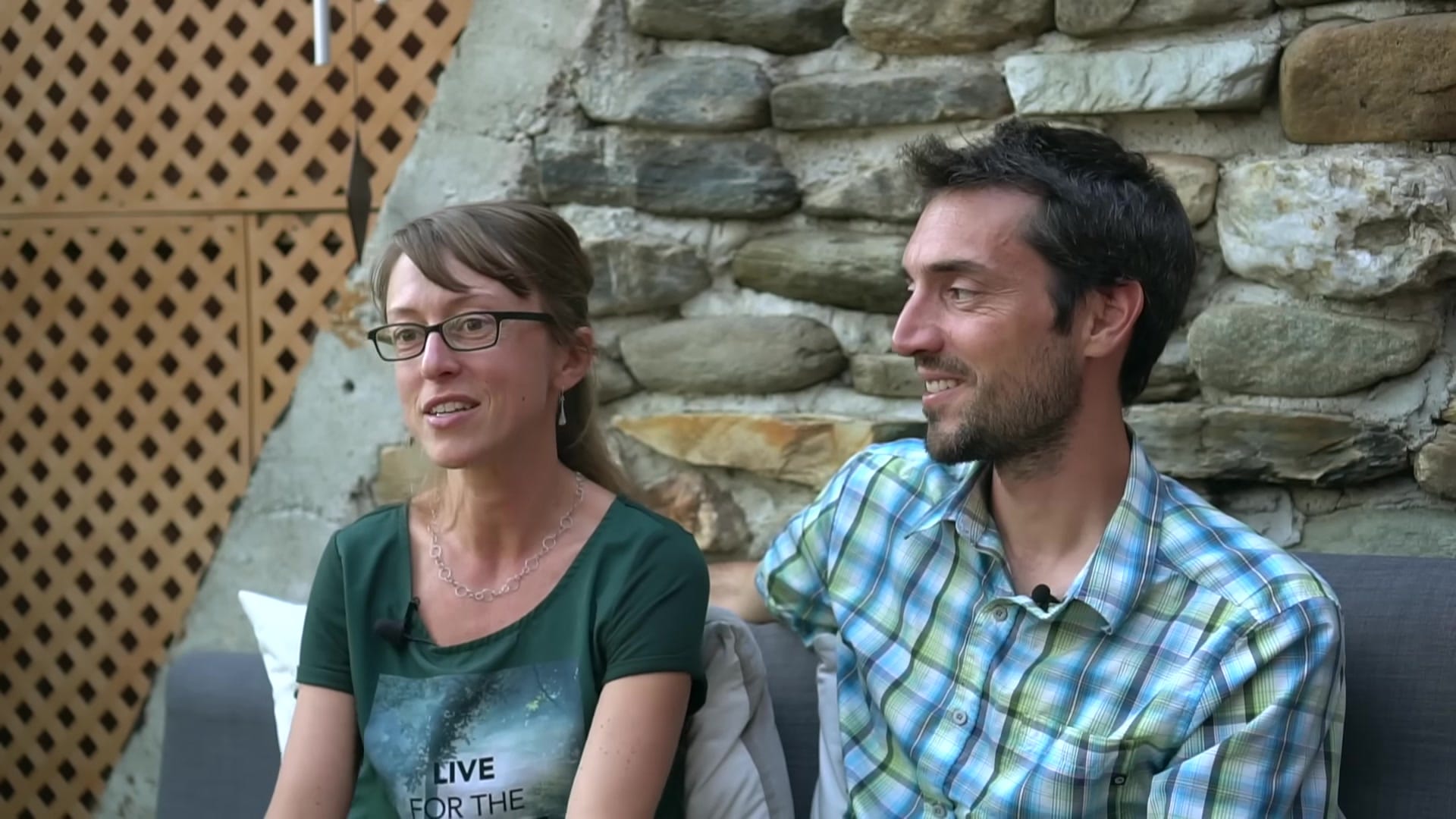
This planted filtration closes loops and returns water to the landscape with minimal fuss.
Composting toilets plus planted greywater give a clear, low-energy waste strategy.
Humidity and ventilation are managed carefully because of the greenhouse/underground mix.
Life Without a Mortgage — Travel, Homeschooling and Hempbassadors
Living off-grid keeps fixed costs low and freedom high.
Avoiding a mortgage was a conscious choice to reduce monthly pressure on work and time.
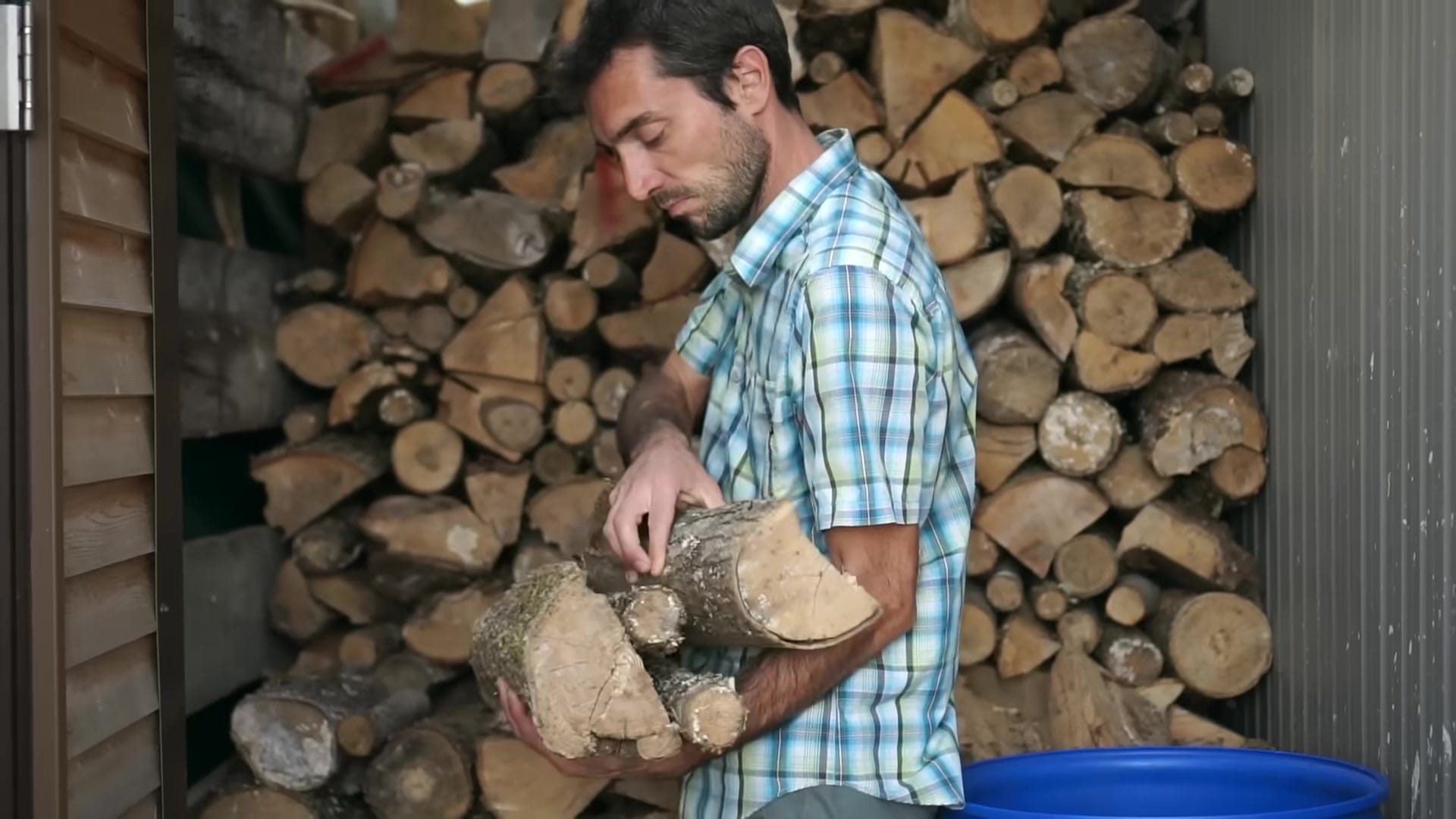
That freedom translates into extended travel windows each winter — typically two to four months away.
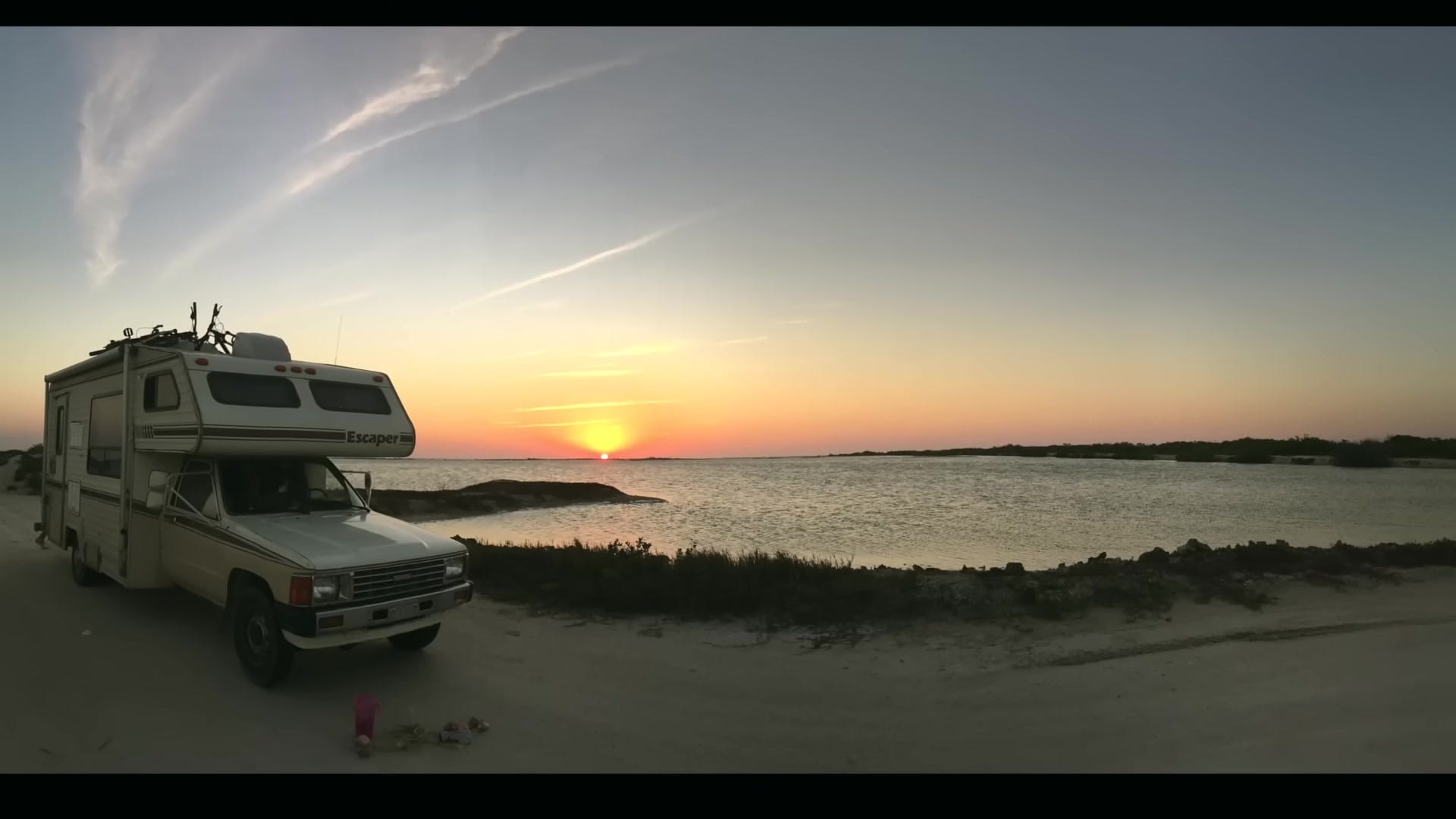
When on the road, schooling becomes travel school with short daily lessons.
Home or RV schooling runs about an hour a day and keeps the child on track while traveling.
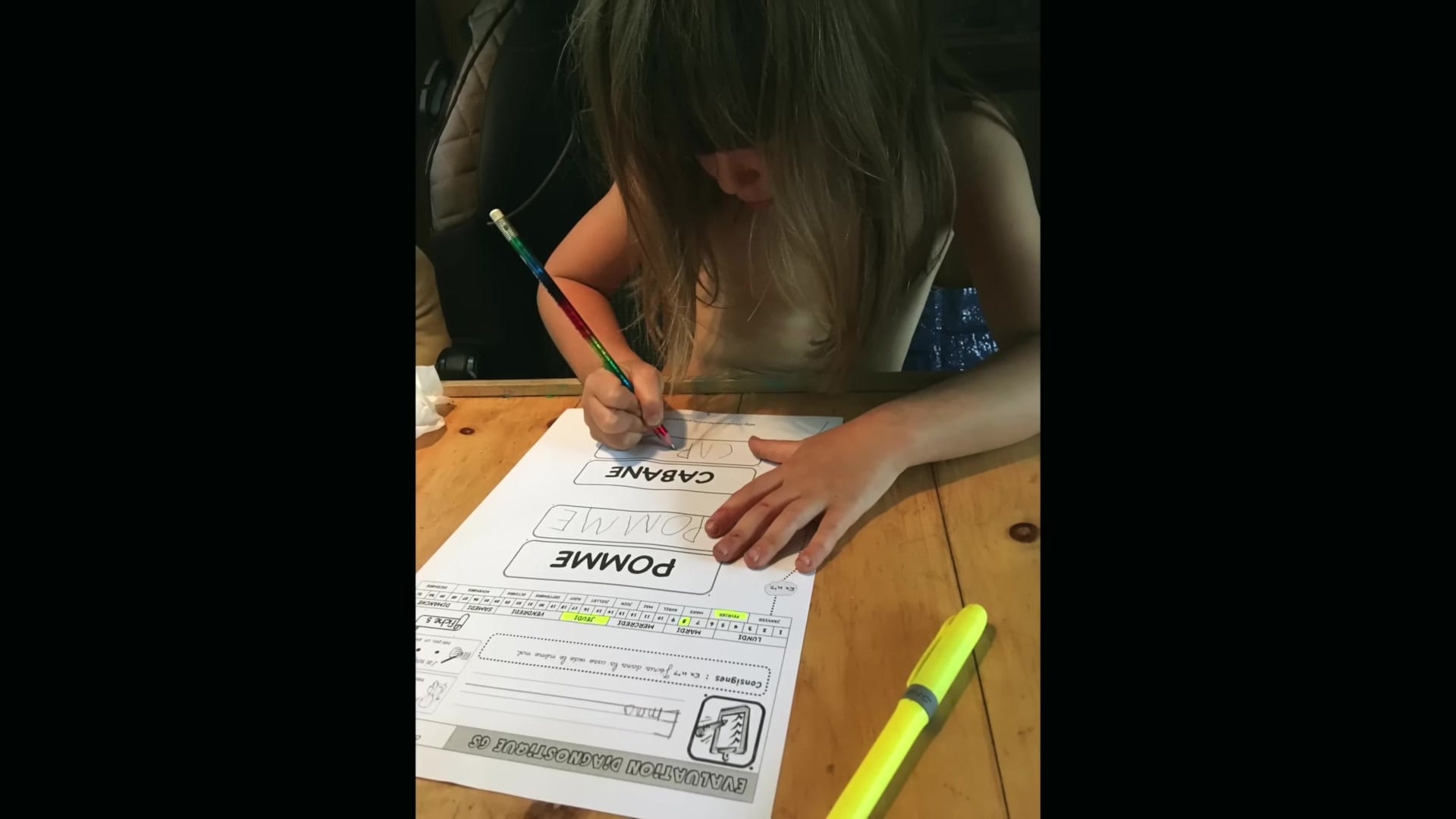
Work and mission continue from the homestead: urban gardening roots remain, and a new Hempbassadors project promotes industrial hemp uses.
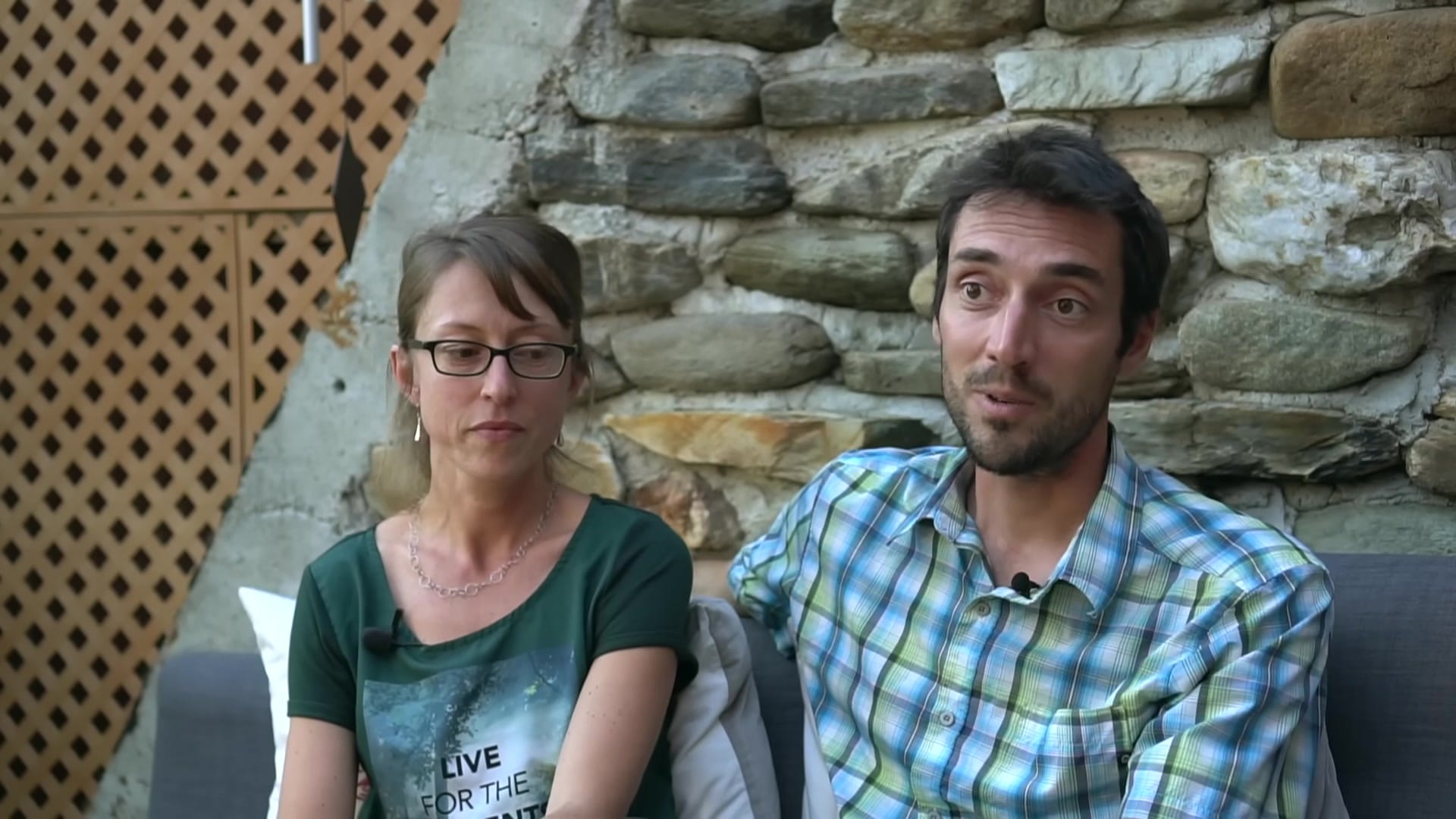
Their mix of local food production, adaptable education, and civic projects makes the lifestyle sustainable and mission-driven.
Simple utilities, lots of self-grown food, and flexible travel combine into a resilient rhythm.
The result is a livable homestead that funds experiences rather than debt.